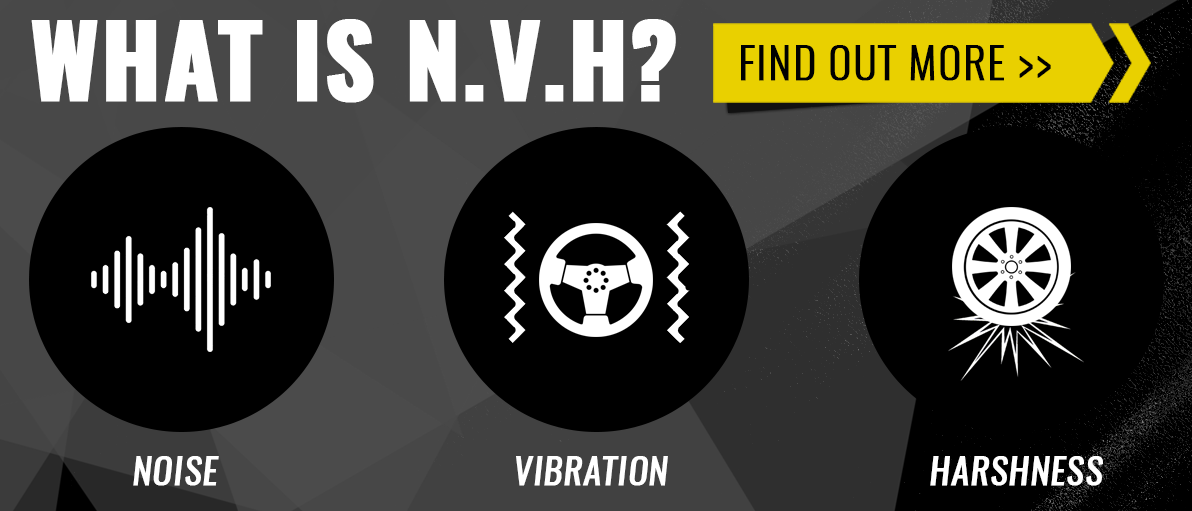What is NVH?

Noise, vibration, and harshness (NVH), also known as noise and vibration (N&V), is the study and modification of the noise and vibration characteristics of vehicles, particularly cars and trucks. While noise and vibration can be readily measured, harshness is a subjective quality, and is measured either via "jury" evaluations, or with analytical tools that can provide results reflecting human subjective impressions. These latter tools belong to the field known as psychoacoustics
Interior NVH deals with noise and vibration experienced by the occupants of the cabin, while exterior NVH is largely concerned with the noise radiated by the vehicle, and includes drive-by noise testing.
NVH is mostly engineering, but often objective measurements fail to predict or correlate well with the subjective impression on human observers. For example, although the ear's response at moderate noise levels is approximated by A-weighting, two different noises with the same A-weighted level are not necessarily equally disturbing. The field of psychoacoustics is partly concerned with this correlation.
In some cases the NVH engineer is asked to change the sound quality, by adding or subtracting particular harmonics, rather than making the vehicle quieter.
Sources of NVH
The sources of noise in a vehicle can be classified as
- aerodynamic (e.g. wind, cooling fans of HVAC
- mechanical (e.g. engine, driveline, tire contact patch and road surface, brakes)
- electrical (e.g.electromagnetically-excited acoustic noise and vibration coming from electrical actuators, alternator or traction motor in electrical cars).
Many problems are generated as either vibration or noise, transmitted via a variety of paths, and then radiated acoustically into the cabin. These are classified as "structure-borne" noise. Others are generated acoustically and propagated by airborne paths. Structure-borne noise is attenuated by isolation, while airborne noise is reduced by absorption or through the use of barrier materials. Vibrations are sensed at the steering wheel, the seat, armrests, or the floor and pedals. Some problems are sensed visually - such as the vibration of the rear-view mirror or header rail on open-topped cars
